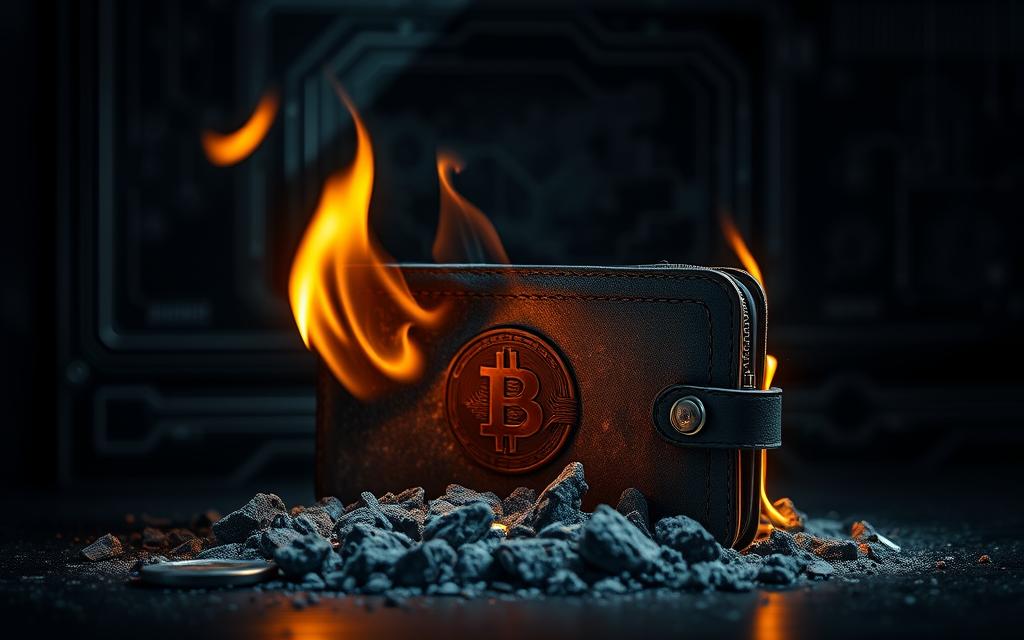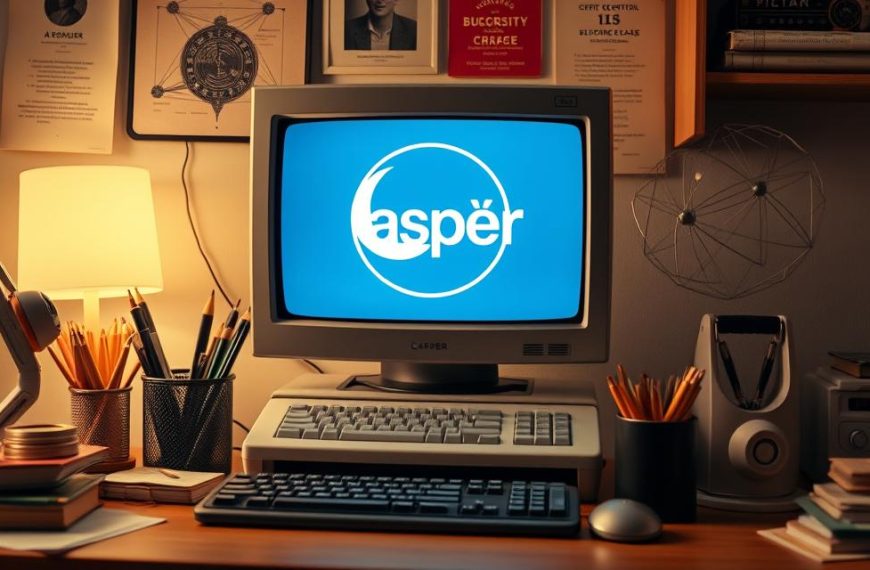Burning refers to the deliberate destruction of digital tokens by sending them to an address with no private key. This action makes those tokens permanently inaccessible and lowers the total supply, which can affect tokenomics and perceived value.
Projects use this method for several reasons. Some aim to curb inflation in issuance-heavy models. Others create scarcity to support price and align incentives with long-term holders. Burns can be manual, automatic under protocol rules, or part of buyback-and-burn schemes.
Transparent and verifiable on-chain, these moves can be audited by anyone. Notable past events include exchange-led quarterly reductions, large platform burns and high-profile token removals that signalled commitment from founders.
Key takeaways: burning alters supply dynamics but does not guarantee higher market price. It is one lever among development, adoption and governance that investors should weigh carefully.
What does it mean to burn crypto? The fundamentals behind token burns
Removing units from circulation is a deliberate step that affects token economics. In plain English, it involves sending tokens to an address with no private key so they cannot be spent again.
Plain‑English definition
A burn address acts like an eater: it only receives and never sends. That permanent removal reduces circulating supply and can also lower total supply if those units were part of the token pool.
Key terms and the basic process
Teams, protocols or DAOs usually decide the amount—either a fixed number or a percentage. The project will announce the plan, outline the process and execute a visible on‑chain transfer to the known burn address.
- Tokens made inaccessible are irreversible by design.
- Any holder could burn a coin, but few do because it costs value with no reward.
- For a clear example, see a concise cryptocurrency burning explained.
How burning crypto works on the blockchain
Authorised groups—core developers, foundations or DAOs—set the strategy and approve any token removal. Decisions arrive via roadmap choices, proposals or on‑chain votes that fix timing and scope.
Choosing the amount
Teams decide a fixed number or a percentage of supply. A fixed number delivers a single predictable cut. Percentage models scale with the token pool and can repeat as activity changes.
On‑chain execution
The project initiates a transfer by sending tokens to a burn address with no private key. The resulting transaction hash is public and anyone can audit the transfer on the blockchain.
Operational and transparency notes
- Operational checks: account provenance, timing and network fees must be recorded to avoid insider doubts.
- Fee burns: some networks destroy small fees per transaction to limit spam and slowly reduce supply.
- Best practice: publish the address, amount and transaction hashes in advance or at execution to shape market perception responsibly.
“Verify the destination address and the transaction hash; finality on‑chain is the clearest proof.”
Common types and methods of token burns
Token removal strategies vary by aim and technical design. Different projects pick approaches that suit governance, treasury and market goals.
Manual burns by project teams
A project team may schedule a one‑off or recurring event to retire tokens. These manual actions often tie to milestones, treasury management or marketing plans.
Automatic, code‑driven mechanisms
Some protocols embed an automatic mechanism that triggers removals on set conditions. Triggers can use transaction volume, time periods or algorithmic thresholds.
Buyback‑and‑burn programmes
Here, a project buys tokens on the open market and then destroys them. This uses treasury funds to affect circulating supply and can influence price discovery.
Fee‑based and built‑in designs
Certain networks destroy a fraction of fees per transaction. Ripple and other ledgers use this to limit spam and slowly lower supply during normal use of the network.
“Automatic and fee‑based designs offer clearer supply paths than ad hoc manual events.”
Operational safeguards include publishing addresses and transaction logs so analysts can verify each action. Coins with large initial supplies often favour programme-based plans for steady adjustment.
Why projects burn crypto: supply, scarcity and market dynamics
Token retirement can act as a fiscal control that offsets new token creation. Projects use this as a deliberate method to manage supply and curb inflation when issuance would otherwise swell circulation.
Creating scarcity can support price and value if demand holds or rises. Reduced supply raises each holder’s proportional stake. That effect helps long‑term holders when real demand persists, but market moves remain conditional on fundamentals.
Regular, transparent events build confidence among stakeholders. Clear schedules and on‑chain proofs signal disciplined treasury work and a coherent strategy rather than ad hoc hype.
Burning also helps projects with very large initial distributions by moderating oversupply and aligning circulating levels with real network use.
“Treat token retirements as one tool among many: shipping features, partnerships and utility underpin lasting value.”
- Advice for investors: view reasons for burning alongside roadmap progress, governance disclosures and treasury action.
- Risk note: misapplied burns may create short‑term noise without long‑term value if the cryptocurrency lacks adoption.
Tokenomics in focus: supply, circulation and demand
Token removal can shift the balance between holders and the available float, reshaping investor expectations.
Circulating supply vs total supply: what matters to investors
Investors track circulating supply closely because it shows the real units that can trade. Total supply gives context for dilution risks and locked reserves.
Burns cut circulating units and can create perceived scarcity, but the effect depends on planned unlocks and ongoing issuance.
How reductions interplay with demand, liquidity and market sentiment
Fewer tokens in the float can support higher price if buyer demand holds. Low liquidity, however, can widen spreads and raise volatility.
Scheduled retirements that offset emissions help align token supply with network growth and curb inflationary drag.
- Model supply trajectories: include planned removals and upcoming unlocks.
- Watch liquidity: tight order books amplify moves in both directions.
- Sentiment matters: disciplined tokenomics can boost confidence, while cosmetic actions may provoke skepticism.
“Price action reflects fundamentals, flows and macro context; removals are one variable among many.”
Proof of Burn explained: a consensus mechanism
In Proof of Burn, deliberate coin destruction becomes the cost that limits influence and secures the blockchain. Validators or miners permanently send coins to an unusable address. In return, they win proportional rights to validate transactions and collect rewards.
How it works and operational variants
Operational variants require burning the native coin in some designs, while others accept different cryptocurrencies as the spent asset. More coins burned typically increase a node’s mining weight, giving that actor a higher chance of creating the next block.
Advantages: energy efficiency and sustainability
Proof of Burn reduces electrical demand compared with energy‑heavy Proof of Work. It lowers hardware needs and aligns incentives for long‑term commitment rather than short‑term hardware races.
Disadvantages: capital intensity and permanence
Trade‑offs include the need to sacrifice assets up front and the permanent loss if rewards fail to cover the cost. Some implementations have reported slower confirmations than alternative consensus models.
- Historical use: Slimcoin and Counterparty showed the model is feasible with varied economic parameters.
- Supply impact: Each on‑chain burn directly alters effective supply and raises the economic cost of attacks.
- Comparison: unlike staking or mining, this mechanism expends assets instead of locking them or burning energy.
“All burns for consensus are publicly auditable on‑chain, which supports transparency and verifies validator commitment.”
Notable token burn events and what they aimed to achieve
A handful of well-documented events illustrate how teams and third parties use token removal strategically.
Binance Coin (BNB): Since 2017 Binance has run quarterly burns with the stated goal of removing 50% of BNB’s total supply. Regularity and published transaction data shape market expectations and feed narratives about future price support.
Stellar (XLM)
In 2019 the Stellar Development Foundation burned 55 billion XLM, more than half the supply. The move aimed to realign resources and strengthen confidence in the project by shrinking reserve amounts dramatically.
TRON (TRX)
TRON carried out a celebratory removal of 1 billion TRX in 2018 after its split from Ethereum. This one‑off example served as a signalling exercise and trimmed circulating tokens at a key milestone.
Shiba Inu and Vitalik Buterin
In 2021 Vitalik Buterin burned roughly 90% of the SHIB he received and donated the rest. That high‑profile act showed how third‑party decisions can become defining events for token communities.
“All of these actions were public and auditable on‑chain, letting analysts verify the amount and transaction number.”
Comparing the examples: ongoing programmes like BNB provide steady policy signals, while one‑off resets such as Stellar and TRON communicate intent or redistribute focus. Short‑term price moves often follow these events, but lasting value depends on adoption and follow‑through from projects.
| Project | Year | Amount removed | Main aim |
|---|---|---|---|
| Binance Coin (BNB) | 2017–ongoing | Target: 50% total supply | Regular scarcity signalling; market expectations |
| Stellar (XLM) | 2019 | 55 billion XLM | Resource realignment; confidence boost |
| TRON (TRX) | 2018 | 1 billion TRX | Milestone signalling; circulating reduction |
| Shiba Inu (SHIB) | 2021 | ~90% of gifted supply | High‑profile public statement and donation |
Challenges, risks and criticisms of burning crypto
Token retirements can be framed as strategic moves, but they also invite scepticism. Critics warn that publicised burns can manufacture a sense of scarcity and sway the market without reflecting genuine user demand.
Market manipulation and hidden control
Sending tokens to an address that is secretly controlled can mislead investors. Such opaque moves let insiders mask holdings or simulate supply reduction while keeping effective control.
Short‑term gains versus long‑term fundamentals
Headline burns often provoke quick price spikes. However, these lifts fade when a project lacks adoption, roadmap progress or revenue to sustain value.
Concentration, verification and opportunity cost
Reducing circulating supply can increase concentration if a few wallets still hold large stakes. That raises volatility and governance risk for token holders.
“Transparent, auditable evidence of removal is the only reliable defence against misleading claims.”
Best practice: credible burns publish public addresses, transaction hashes and allow third‑party audits. Even then, macro forces can overwhelm any single supply action.
| Risk | Consequence | Mitigation |
|---|---|---|
| Artificial scarcity | Short‑lived market moves | Require on‑chain proof and context |
| Insider‑controlled address | Misleading supply figures | Independent audit and provenance checks |
| Concentration after removal | Higher volatility, governance risk | Disclosure of wallet distribution |
How to assess a burn announcement as an investor
A credible announcement needs on‑chain proof and clear budgeting to carry weight for market participants. Start by confirming the technical facts before forming an investment view.
Verify the ledger entry and transaction details
On‑chain checking is first. Locate the published address and confirm the transaction hash. Note the amounts and the network fees paid.
Confirm the destination is an unrecoverable address and not controlled by insiders. If provenance is unclear, treat the announcement with caution.
Place the action within token economics
Compare the reported removal to total and circulating token supply and upcoming unlocks. A one‑off cut matters less if large emissions are imminent.
- Review whether funds used were from organic revenue, market buybacks or treasury reserves.
- Check the project roadmap and delivery record to see if the action aligns with tangible progress.
- Assess liquidity: a small supply change can still widen spreads and increase short‑term volatility in thin markets.
Disclosure quality signals governance standards. Clear numbers, public addresses and a rationale show stronger alignment with long‑term holders.
“Treat the announcement as one data point: verify the facts, then weigh the move against supply schedules and market context.”
| Check | Why it matters | Red flag |
|---|---|---|
| Address and hash | Proves the transfer occurred on‑chain | Hidden provenance or reusable wallet |
| Amount & fees | Shows scale and sincerity of the action | Fees too low for the network or inconsistent sums |
| Supply context | Shows real impact on token supply and dilution | Large upcoming unlocks negate effect |
| Funding source | Indicates sustainability of buybacks | Treasury drain without revenue plan |
For a focused analysis of how removals can influence liquidity and market depth, see this note on impact on liquidity. Use that context alongside on‑chain proof when making decisions.
Conclusion
Consider burning as one lever within a wider suite of tokenomic choices rather than a standalone cure.
Burning is the process of sending tokens to a burn address to remove them from circulation and adjust supply. Such moves can help create scarcity and may support value when demand exists.
Mechanisms differ: manual, automatic, buyback‑and‑burn and fee‑based models each play a distinct strategic role. Proof of Burn stands apart as a consensus mechanism that trades assets for security and energy efficiency, but it carries capital costs.
Investors should verify transactions on the blockchain, compare event size with total supply and evaluate governance quality. High‑profile examples offer lessons, not guarantees.
Use burns alongside utility growth, clear roadmaps and robust demand—prioritise long‑term value over short‑term noise.




















